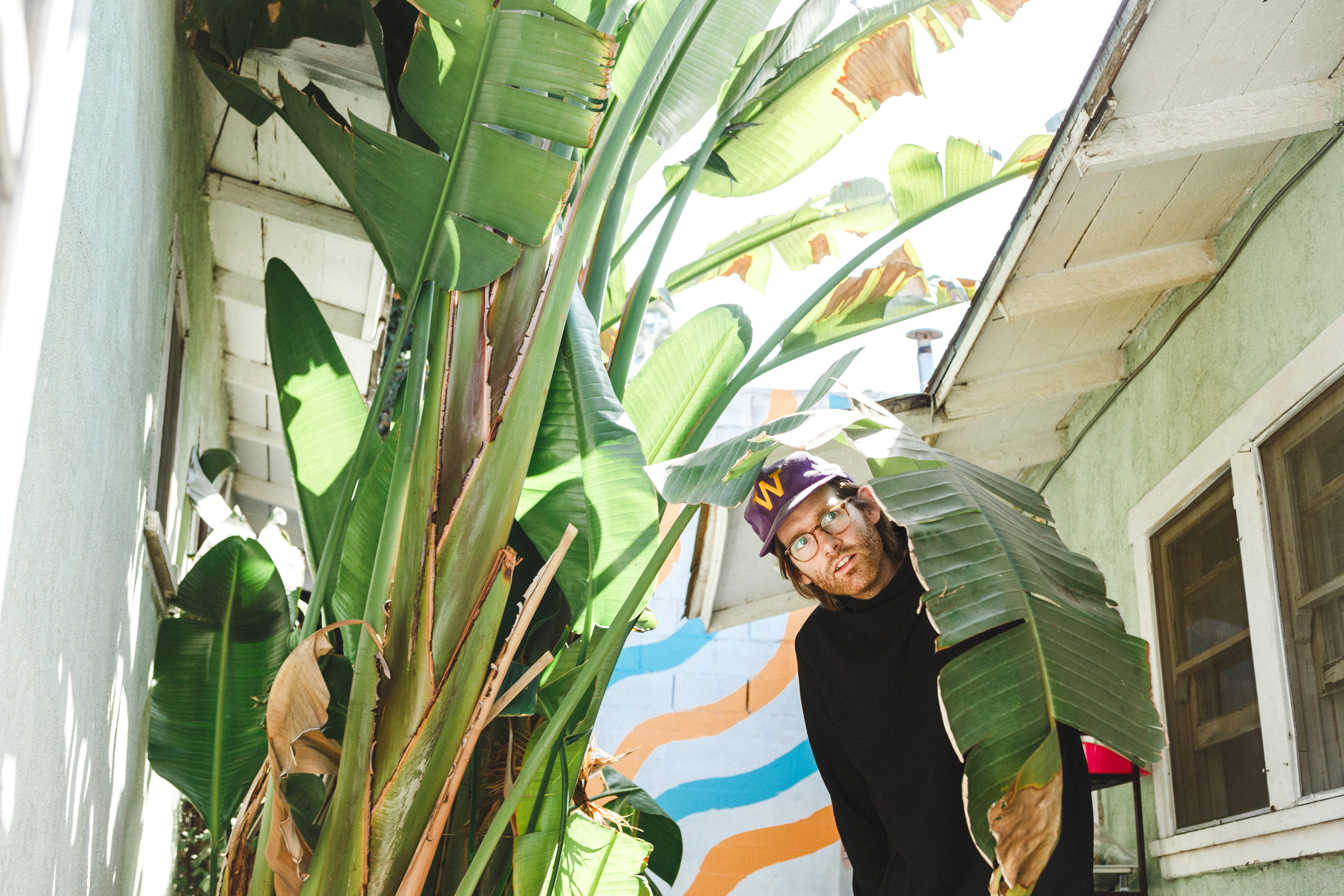
- Interview by Brandi Katherine Herrera November 8, 2017
- Photography by Tiger Tiger
Jimmy Marble
- director
- photographer
LA-based director/photographer Jimmy Marble knew very early on that he was an artist, but the path to a career in photography and filmmaking wasn’t always so clear. We visited Jimmy in his Silver Lake studio where he talked to us about his beginnings as a writer, and the connective nature of language, craftsmanship, and color in narrative filmmaking; about putting in the long hours to get where you want to go; and how fatherhood (and a studio space) has completely refocused his day-to-day.
How did you end up on the path you’re on now, rather than following a more traditional route? What would you consider traditional?
Well, you’re an artist, designer, and director—not a dentist. I’m definitely not a dentist. (laughing) That’s the crappy part about being an artist, though—there isn’t a clear path. It’s not like someone says, “Okay, you do this, this, this, and this, and you’ll be set!” and then you have a career, and all of your student debt is gone. I’m a pretty goal-oriented person, though. If you look around here, it’s all check boxes of stuff I need to do.
You’re so organized! But I’m not! I need to have these walls full of goals in order to focus. I think I’ve always known where I wanted to go. So I’ve been trying to fill in the gaps between where I am, and where I want to be, and then I take the next logical step to get to that point.
Toward filmmaking? I’ve always wanted to make narrative films. I started by making music videos, and that led to some commercials, which led to having the ability to work on more personal projects. And that extra cash and time is what led me to photography. I had so many ideas for projects, but it was so much easier to go out and take a photo than make a short film.
For the first few years, I was obsessed with creating more and more photos, because I love the thrill of creation, and crave constant motion. But I never expected to make a career out of it. When I started out in my early 20s, I had no ambition whatsoever to become a photographer. Even up to when I was 26, I still had zero photographic ambition. Then I turned 27, and really fell in love with it, and started pursuing it full-on. Once I hit 30, and I had a much more prominent photo career than I’ve ever had as a director, I realized I wanted to turn the ship back and focus more on directing again. Not that I’m negating photography all of a sudden—I’m still trying to be as prolific of a photographer as ever. I just want to make sure I’m in control of the direction I’m moving toward now.
You said that you’ve always known where you want to go, but that you’re just trying to figure out the path to get there. Did you know that even as a child? Basically from the time that I could write, I was obsessed with writing stories. I’m talking like second grade, coming home and getting on the word processor as soon as I arrived, and banging out stories.
What kinds of stories were you writing? Random little ones. I had really cool teachers who encouraged what I was doing. At lunch, they would let me read my stories to the class. I loved it! They were funny stories, and I loved working the crowd and making my friends laugh.
You were performing. Yeah, it was like a performance at that point. Half writing, half performance, and the thrill of being in front of a crowd. In junior high, I had an awesome art teacher. I wanted to be in his classroom as often as possible, so I was always there, and always drawing. I’m not a good illustrator at all, and never have been, but I would make these pretty substantial Bosch-like paintings. Technically, they weren’t good, but there were all of these little stories happening throughout them.
In high school, I started watching movies. I remember driving by a theater and seeing The Virgin Suicides poster, and that really piqued my interest. I think I was 16 when it came out. I watched it, and all of a sudden I understood the kind of poetry that’s possible in movies. So I would bring notebooks to math class, and handwrite scripts in the back. I shared them with some of my friends, but I’m sure a lot of people didn’t know that that’s what I was up to. I never had a camera, and I never felt comfortable with cameras, so I never got to make those scripts into movies. I started doing that more in college, where I actually got to make some short films.
“Basically from the time that I could write, I was obsessed with writing stories. I’m talking like second grade, coming home and getting on the word processor as soon as I arrived…”

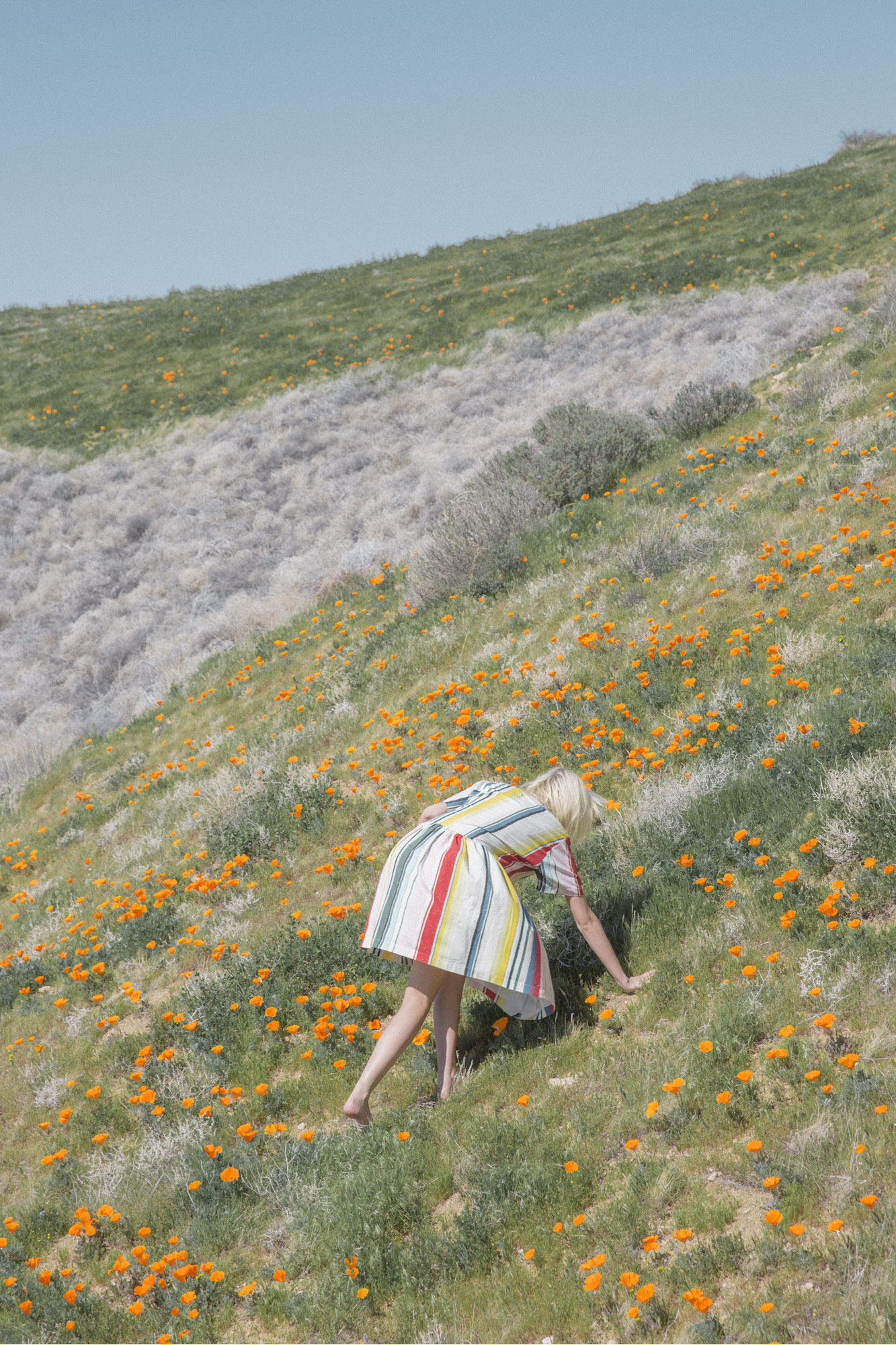
You had supportive mentors in school from an early age. Did your family encourage you as well? They were really confused. I get it. I come from a family of interesting people, but they’re not artists. If you’ve lived your whole life in Yakima, and all of a sudden you have a kid and he says he wants to be an artist, it’s like saying he wants to be an astronaut—the odds aren’t in his favor. So I think they were pretty apprehensive about it.
They were concerned about stability. Yeah, stability, and I think they were just scared of what artists do with their free time—it sounds like a pretty unsavory lifestyle. (laughing) But anyone in any profession can have an unsavory lifestyle; just look at our president. My teachers were really encouraging, though, and when I went to college to study art history and creative writing I had great professors who were really passionate.
Where did you go to college? Western Washington. For what I had access to, I feel like I had the best college experience I could possibly have had. One of my creative writing classes was on playwriting, and I had the best professor. He got me so pumped to write scripts. I kept writing plays throughout college, and even though I wasn’t a theater student, they let me direct plays in the theater department, and use all of their facilities. Spending four years looking at paintings also has a really cool effect on your brain. You absorb so much that way. So I really did get the most out of my college experience. It was awesome.
I had no idea that you started out as a writer, and then slowly moved in more of a visual direction. Do you work with a writer on film projects, or are you writing the scripts? It varies. I wrote End of Babes by myself. The new film, Poor Cherries, I wrote with a friend. And the short I’m going to shoot next weekend, I also wrote with a friend. I like collaborating a lot, especially on longer projects.
I haven’t written a feature script in years. The last time I did, I was a fledgling artist and didn’t have a career. Even now, I don’t know if I could take the time to write something like that—having a writing partner that I’m splitting time with helps so much. At this point, half of the fun for me is creating the idea of a story, and then getting to share that experience and fill in the details with a partner.
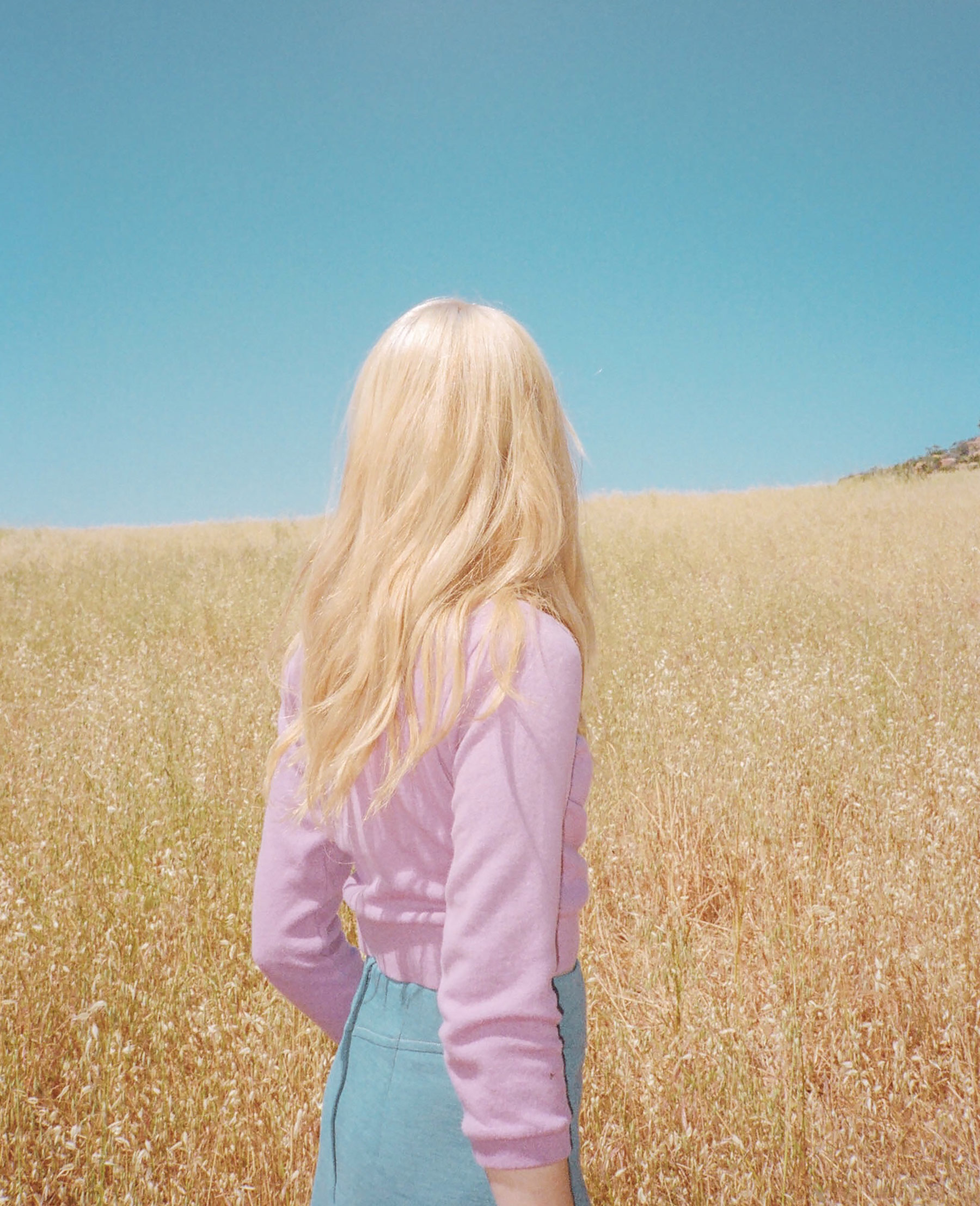
“There are so many things you get to do with images that allow you to play with emotions in a more unconscious way. It’s kind of like music—a lot more impressionistic, where you’re trying to create more of a mood than anything.”
I’m interested in how you feel about approaching a story visually versus through language. What role does each play in the stories you’re telling? The thing is, a script is so different than prose. With prose, you’re painting the full picture. My favorite author is Gabriel García Márquez, and it’s staggering how in just one sentence he can encapsulate every emotion you’ve ever had in your life. I don’t understand it; it’s just so beautiful. But when you’re telling a story visually, through moving pictures, you can compose your image, and frame, prop, and design it in a certain way. And then you get the contrasting image that follows right after that impacts it, and can completely change how you saw the first image. There are so many things you get to do with images that allow you to play with emotions in a more unconscious way. It’s kind of like music—a lot more impressionistic, where you’re trying to create more of a mood than anything.
What kinds of stories are you telling right now through moving pictures? Do you want to see the new one?
Yeah! We just finished it last week. I think it’s an interesting mix of language and visuals so it’s appropriate for our conversation. (watching Poor Cherries)
So great! (clapping) It reminds me somewhat of Chytilová’s Daisies. Yes! Daisies was a massive touchstone for this movie.
I can totally see what you mean about language. It also feels like a poem-film to me. Did you co-write it? I did, with my friend Forest Perrine, who’s a muralist up in Seattle. He had made this amazing proposal for a mural project, based on the Iranian film Taste of Cherry. Have you seen it?
I haven’t. It’s about this guy who’s trying to commit suicide. He has a grave dug for himself, and he’s just trying to find someone who will come out to the desert and bury him. On his journey, he finds a guy who tries to talk him out of it. And the guy’s whole logic is, “Look, I get that life sucks, but at least there’s the taste of cherries.” Forest, who was inspired by that, came up with all of these different sensorial moments for his mural proposal, which I was really moved by, but the city of Seattle said no to it. I thought it was so beautiful, and that it still somehow needed to be made, so I asked him if he wanted to turn it into a movie.
I love that it started out as a mural that was inspired by a film. It’s very full circle. Right?
“In high school…I remember driving by a theater and seeing The Virgin Suicides poster, and that really piqued my interest. I watched it, and all of a sudden I understood the kind of poetry that’s possible in movies.”
You’re also a muralist. In what ways do the different mediums you work with inform or inspire each other? I want the craftsmanship to be at the forefront of how people enjoy whatever it is I’ve made. If they’re looking at a photo, it’s about the composition and the design of the image that’s highlighting a certain emotion I’m hoping to convey. I’ve always been inspired by pre-war modern art, where the work itself is about their materials and their process. Post-war cinema did a lot of the same stuff—when you’re watching new wave films, half of the joy is in watching these super-stoked directors being super stoked about making movies. They’re throwing inside jokes in about their past movies, and about their friends and their friend’s movies. It’s all so self-referential.
And I’ve always gravitated toward the prominent use of color as an emotive element. I don’t know if everyone likes that, but I think people notice it, and it helps them to experience the feeling of the image or movie or mural they’re looking at. I think that’s a way that I’ve been able to bridge all of these different mediums together.
Do you think of color as a kind of character? (whistling) That’s never crossed my mind! I’ve never considered it as a character, but that’s interesting. It kind of is. It’s definitely an omnipresent thing.
It’s such a strong element in everything you do, and makes it immediately recognizable as something that came from your hands and mind. It’s probably my way of making a cameo. It’s also just how I like things to look, so I guess you can interpret it in a few different ways. I also think it allows people to notice what they’re looking at in a more aware way, because the color stands out so much. A goal of mine since early on has been trying to get people to be more critical and aware of visuals in general.
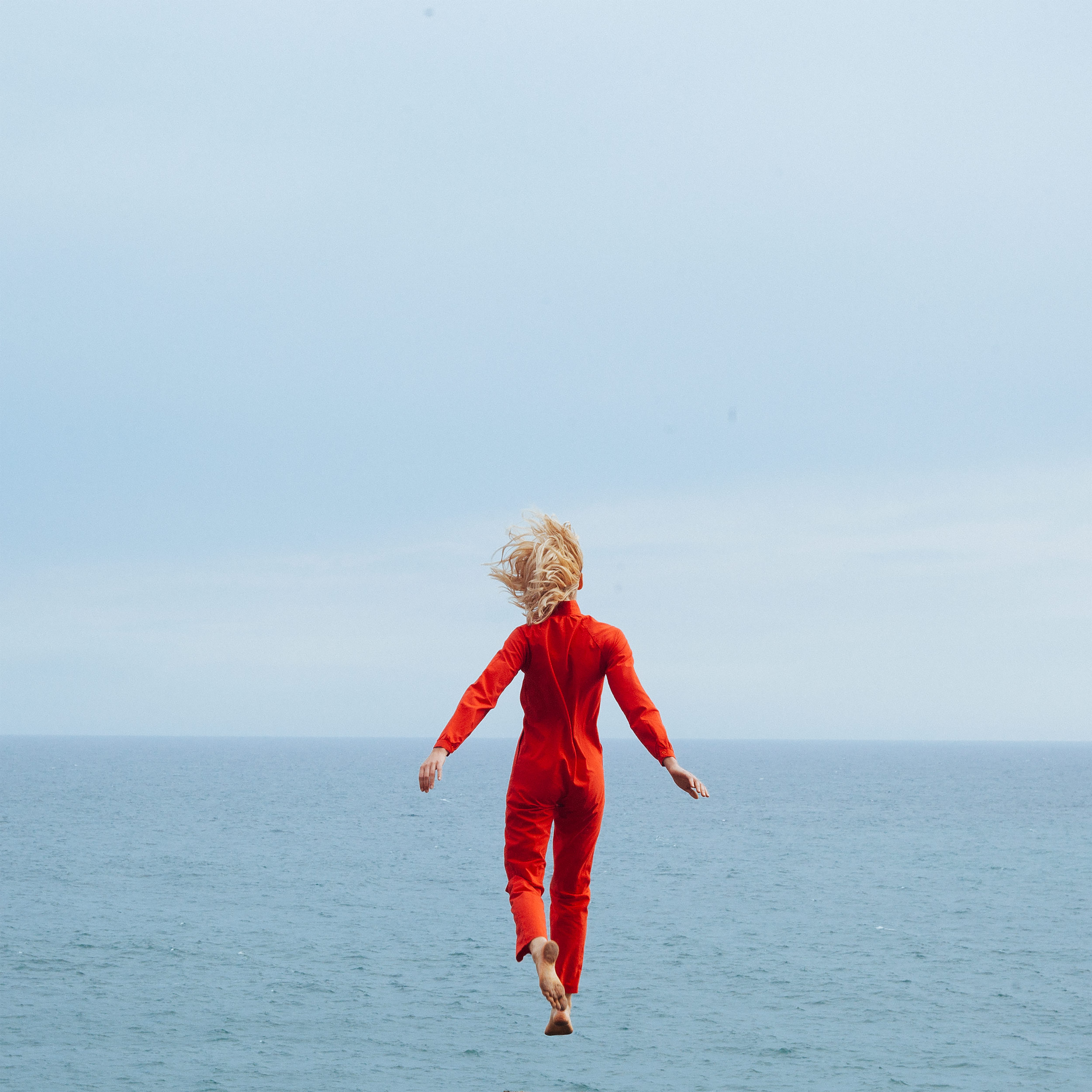
“…I’ve always gravitated toward the prominent use of color as an emotive element. I think that’s a way that I’ve been able to bridge all of these different mediums together.”
With your education in playwriting, do you ever look at the film work you do through that lens? I can get a little presentationy sometimes, and a bit theatrical. But I think even back in college when I was putting on plays, I was writing ones that were basically short films that I could make in a one-act format. More than anything, what I gleaned from that experience was learning how to talk to actors. I remember feeling really uneasy about giving notes to actors to have them do things in a certain way, so it was good to get that out of my system as a 19-to–22 year old. By the time I was trying to do things with a more ambitious scope, I was able to communicate what I wanted a lot more easily.
There’s a real confidence that comes with having that kind of experience. Every time I get comfortable with the process, I try to do something more ambitious or work with collaborators that I look up to even that much more. So with each new project or situation, I’m a little bit more out of my element, and have to keep navigating those first-day-on-the-job type anxieties.
A couple of years ago, I did a magazine shoot with a couple of my first “celebs.” They treated me really poorly, and I left thinking, This sucks so bad! I was mad at myself for not controlling my set, and letting the talent dictate the vibe. I told myself I would never let that happen again—that I would dictate the vibe of my set from now on, no matter what, or who it is I’m working with. The photos turned out fine, but I felt really beat up about it, and I still don’t like looking at them. So it really does come down to always continuing to learn.
And you so often have to learn things the hard way. What advice would you give a photographer or director who’s just starting out? Find who you like, who is also working hard, and work harder than them. I’m 31 now, and have been in hustle-mode for eight years. When I moved to LA and was starting out, I thought everyone I knew was going to make it, and that I was going to make it. That’s the beauty of being young—you party together and work together, and all of your friends are going to be famous and successful. But then you start watching people slowly drop off. The only ones that don’t are the ones that love all aspects of working, because they love what they do. It’s really about who’s going to put in the most hours.
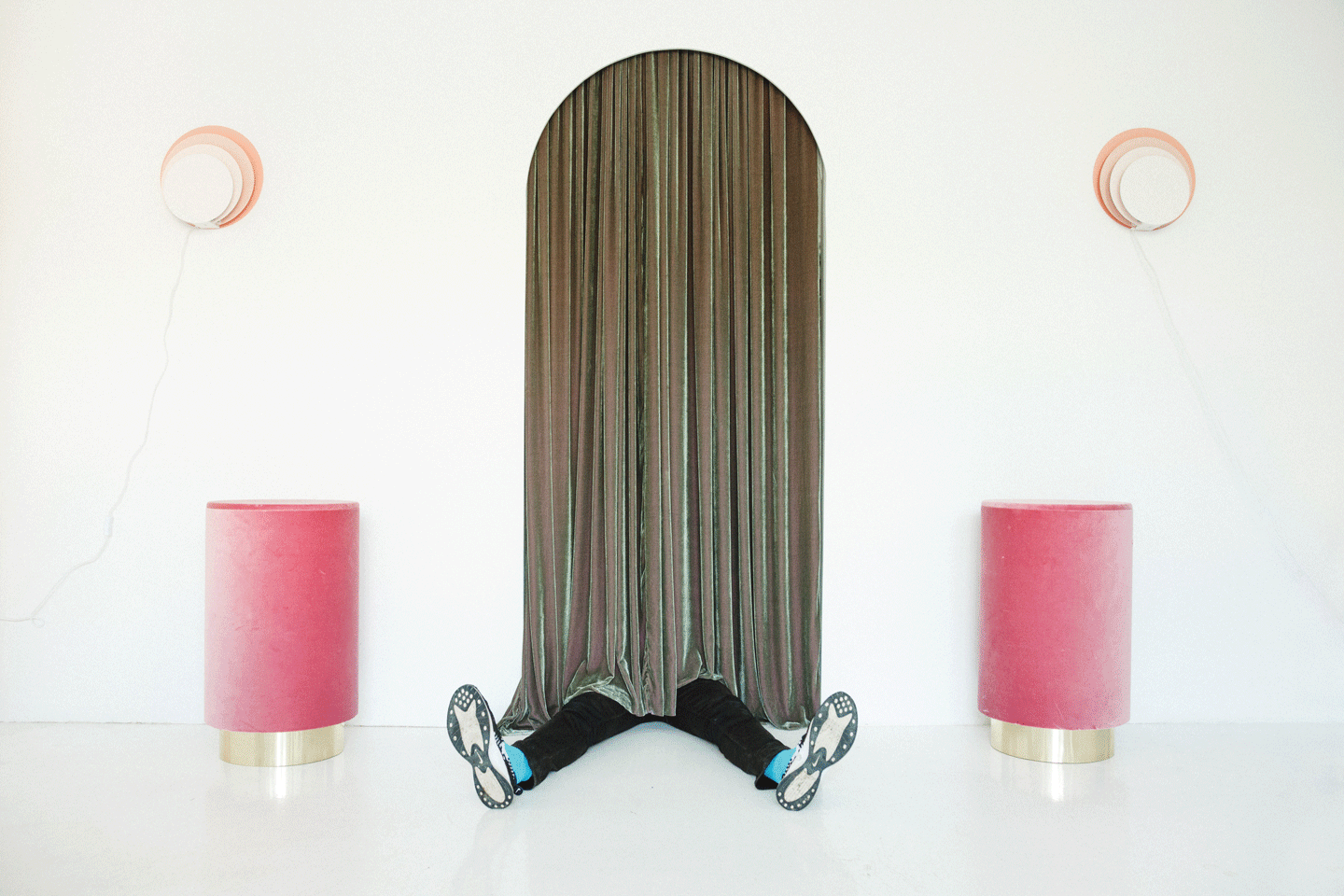
“…I know that I have to get everything done in X amount of time, and I have this sanctuary that’s completely dedicated to my creativity. There’s so much more structure now to my creative life that didn’t exist before.”
Are you still hustling? All of the time. I’m not even close to being able to stop hustling. It’s like I’m in the first sentence of chapter two of a novel right now—barely scratching the surface of what I want my career to be.
How do you make time amidst the hustle for your personal projects? When commercial work comes in, it necessitates all of my attention. Once the job books, it’s pretty much a sprint, but then it’s over. So I go back to being unemployed, and pick up wherever I left off on the project I had been working on. And I keep office hours. I’m in here working every single day, whether it’s on a paid project or one of my own.
What impact does space have on the work you’re doing? My wife and I have been in our office for a year now, and it has been so incredibly beneficial. I’ve grown so much as an artist, and I’ve been able to do many more personal photo shoots. I’m making my second short film in a year, which is something I’ve never done before. And I work fewer hours!
I’m a stepfather now, which is a whole new thing these last couple of years, and family time is extremely important. We drop off the boys in the morning, and pick them up in the afternoon, so I have set working hours. I never had that before. My first five or six years in LA, I would work until 3:00 or 4:00 in the morning if I wanted. There was no structure, because I didn’t have a place to work, and I didn’t have office hours, or anyone demanding my time. Now, I know that I have to get everything done in X amount of time, and I have this sanctuary that’s completely dedicated to my creativity. I come in here and I know exactly what I’m here to do, and I get it done. There’s so much more structure now to my creative life that didn’t exist before.
If I could give any other advice, it would be that as soon as you can afford it, get your own space. Ideally one that’s not in your house. Don’t just get a two-bedroom apartment—get a separate place that you pay separate bills for, the whole thing.
You really have to be hyper-focused in the time that you do have when you’re a father. How has that shift been for you? Totally positive. It’s been beautiful. And Jesse’s pregnant now! Bringing in our third boy. We’re like a street gang.
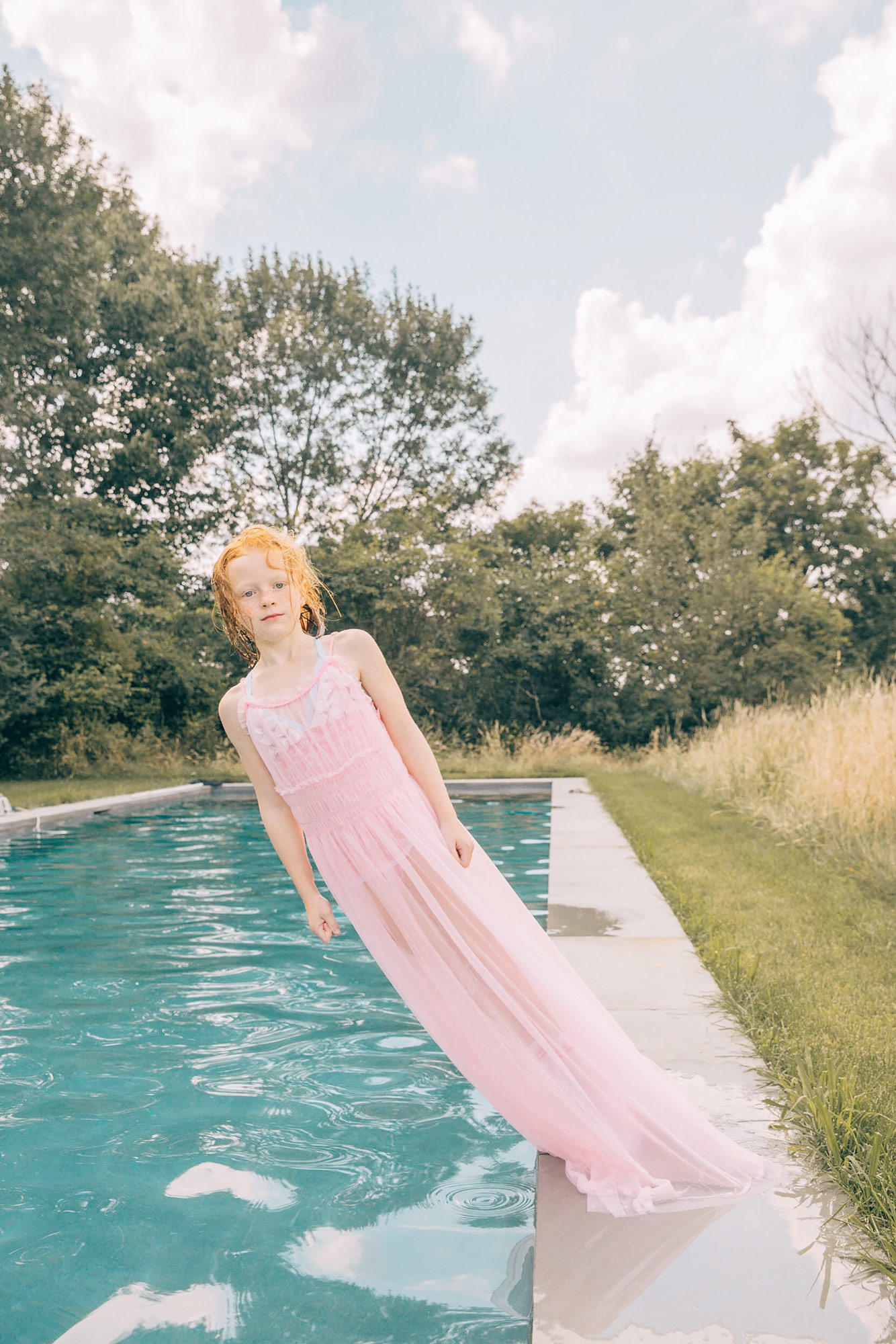
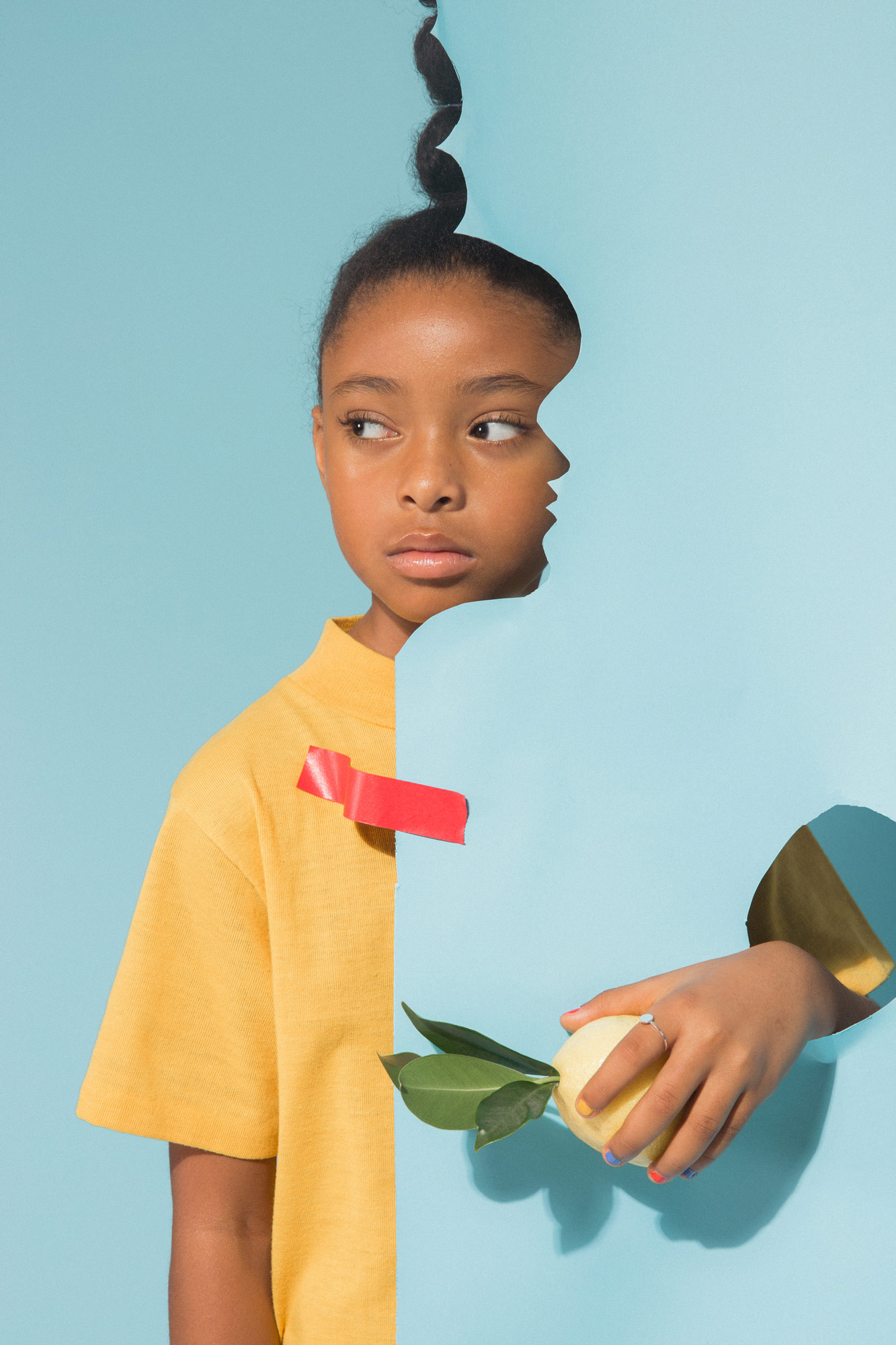
Oh wow, congrats! Thank you! I would recommend that everyone go have kids. (laughing) Or I would at least tell them not to be so afraid of it. It makes you focus so much more. When I was in my mid 20s, I read this Francis Ford Coppola interview where he actually did give that advice. He was like, “Get married young!” He said that it would clear your mind of so many superfluous things, and allow you to focus on being married, and on family and your career. I understand that now. There’s so much drama in your single life. You’re just wondering all of the time about this person and that person and why you’re so unlikable. (laughing) Eliminating that, and focusing on work and simple things—like what’s for dinner—is great for me. Maybe not for everyone. But people have been getting married forever. There’s something to it. (laughing)
You collaborate with Jesse, your wife, as well? Yeah! We started this thing called jimjam, where we focus totally on projects where kids are at the center of the narrative. Kids were on her radar way before they were on mine, so she noticed a long time ago that a lot of kids photos are bogus. Just recently, a lot of them have gotten a lot better. Gucci’s new kids campaigns are incredible, and Stella McCartney’s stuff always has been. But by and large most of it is really cheesy, and almost offensive to kids, who are the most interesting humans of all. They’re presented as if they were brainless, but they’re so complex.
So we’ve been focusing on taking photos of kids, but she has also been helping me creative produce my new short films. We share this office space, so there’s naturally so much creative crossover.
That’s really nice. Yeah, we really help one another solve each other’s creative problems.
Totally unrelated: What are you watching, reading, or taking in right now? Not enough. Lately, it’s mostly been Seattle Seahawks-related since the season just started. (laughing) You know, it’s funny. I feel like my inspiration comes in waves, and it’s in time with my creative waves. I kind of just start going. What I’d consider a creative wave normally lasts about six months. And for six months, I’m in constant work-mode, and all of the projects have a pretty similar vibe. And then the wave ends, because we’ve either scheduled a vacation, or I’m out of energy, or some big job comes along that cuts it off. But when I regroup again, I’ll go on kind of an inspiration bender, and get back into things.
I read Al Franken’s book this summer, and I read this other book, Sapiens, which is about the history of humans and how we evolved. The writer takes this really beautiful, objective approach, and gives multiple points of view for how and why things evolved. I wish I could remember what we watch. I feel like I watch a lot of period pieces in the summertime.
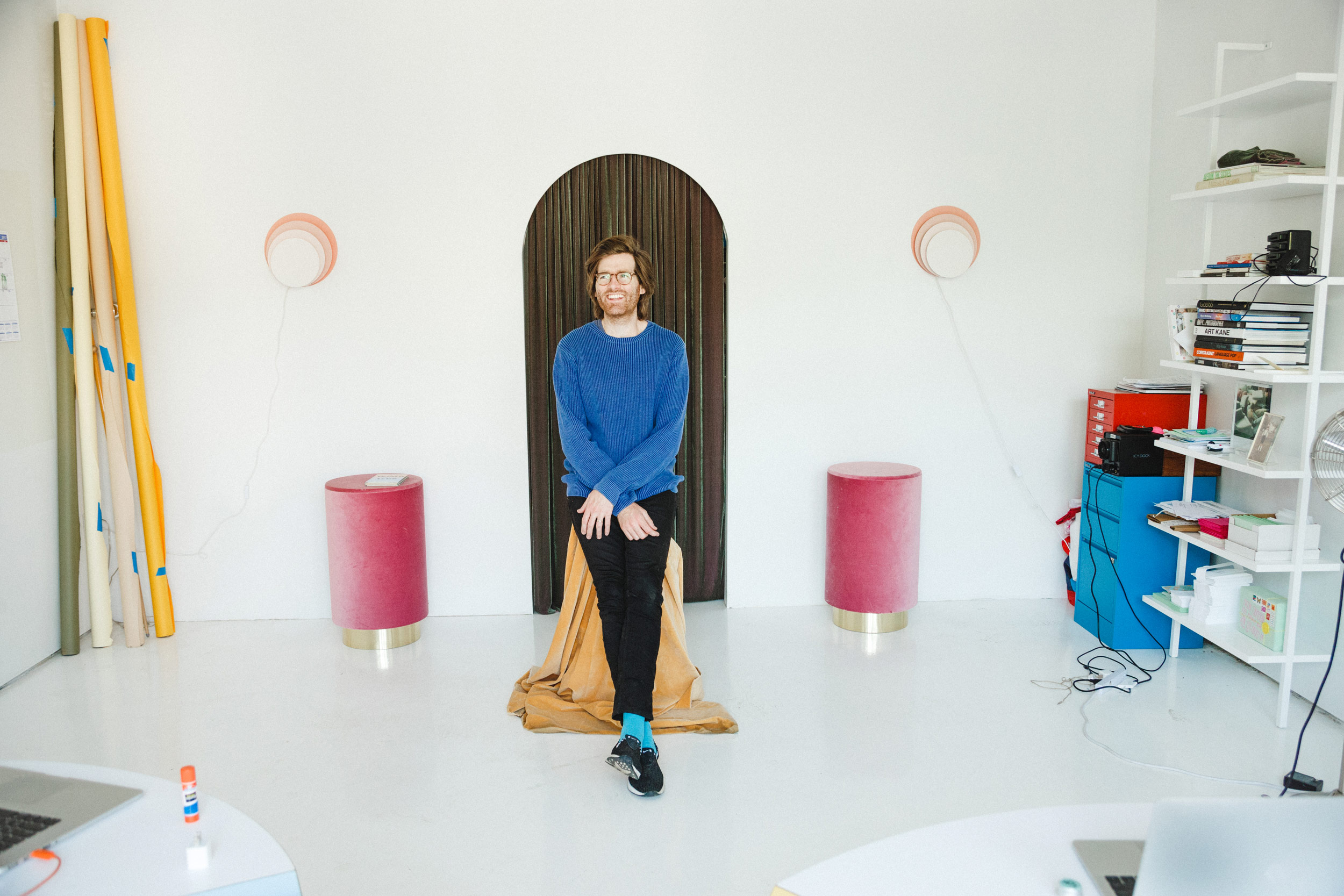
“…as soon as you can afford it, get your own space. Don’t just get a two-bedroom apartment—get a separate place that you pay separate bills for, the whole thing.”
Has what you watch changed since becoming a father? When I was in college, I was so pretentious. I was only into art movies, and had a list of directors I watched—it was like I was a Pokémon collector, but with directors. It was a real part of my identity. But when I moved to LA, something happened. I’m a lot less pretentious now, and recognize that everything has its own merit. That’s ramped up considerably since I’ve started having to appease youthful movie tastes.
I watch a lot more Lego movies now. (laughing) And I go to the movies more than I’ve ever gone before—I saw the new Spider Man, and Ninjago comes out tomorrow, so we’re definitely going to see that. I had never watched the Harry Potter movies until recently. The first two are pretty much garbage, but the third is directed by Alfonso Cuarón—which is so weird, I have no idea how he got pinned to direct a Harry Potter movie—and it’s beautiful. He really changed the whole course of the franchise.
What are your thoughts about legacy—in the work that you do, and also as a father? If I didn’t have a family, and I went to the doctor today and they said, “Well, Jim, you’re going to die tomorrow,” (laughing) I would feel like I had wasted my life. I’d be like, I made a stack of photographs, and some movie files. That’s not that impressive. But having a family really makes it feel like life is a lot bigger. My aunt Christy just passed away. I really loved her—we had a great relationship, and it’s hard for me to think about my kids not being raised with her around. What makes it even worse, is that I’ll never be able to communicate how cool she was. Even on my best day, where the words come to me the most easily, it won’t translate.
I hope I can communicate the joy of working, and I hope I can instill a sense of passion and the thrill of life to my family. I love what I do. I love cooking, and I love swimming, and I’m excited to pass on all of those attributes and activities to my family. I feel like that would be a really cool legacy. But at the end of the day, I make things that are pretty disposable. I don’t know if I’ll ever have a career where my oeuvre is a historical legacy that’s impacted our culture in the way that my aunt Christy has impacted me. I’ll try to, but I don’t know if I ever will. I’d be happy if my great grandkids love swimming and drinking wine with friends as much as I do. That would be ideal.
Are you creatively satisfied? I think “satisfied” implies that you’re satiated—that you’ve had a good meal and can move the plate away. But I’m still extremely hungry. So in that way, no, I’m not satisfied. I’m totally ready for more. I’ve taken on the mentality that there isn’t a finish line. I’m proud of the effort I put into my work, and of a lot of the outcomes I’ve had. But I haven’t gotten even close to my potential yet.
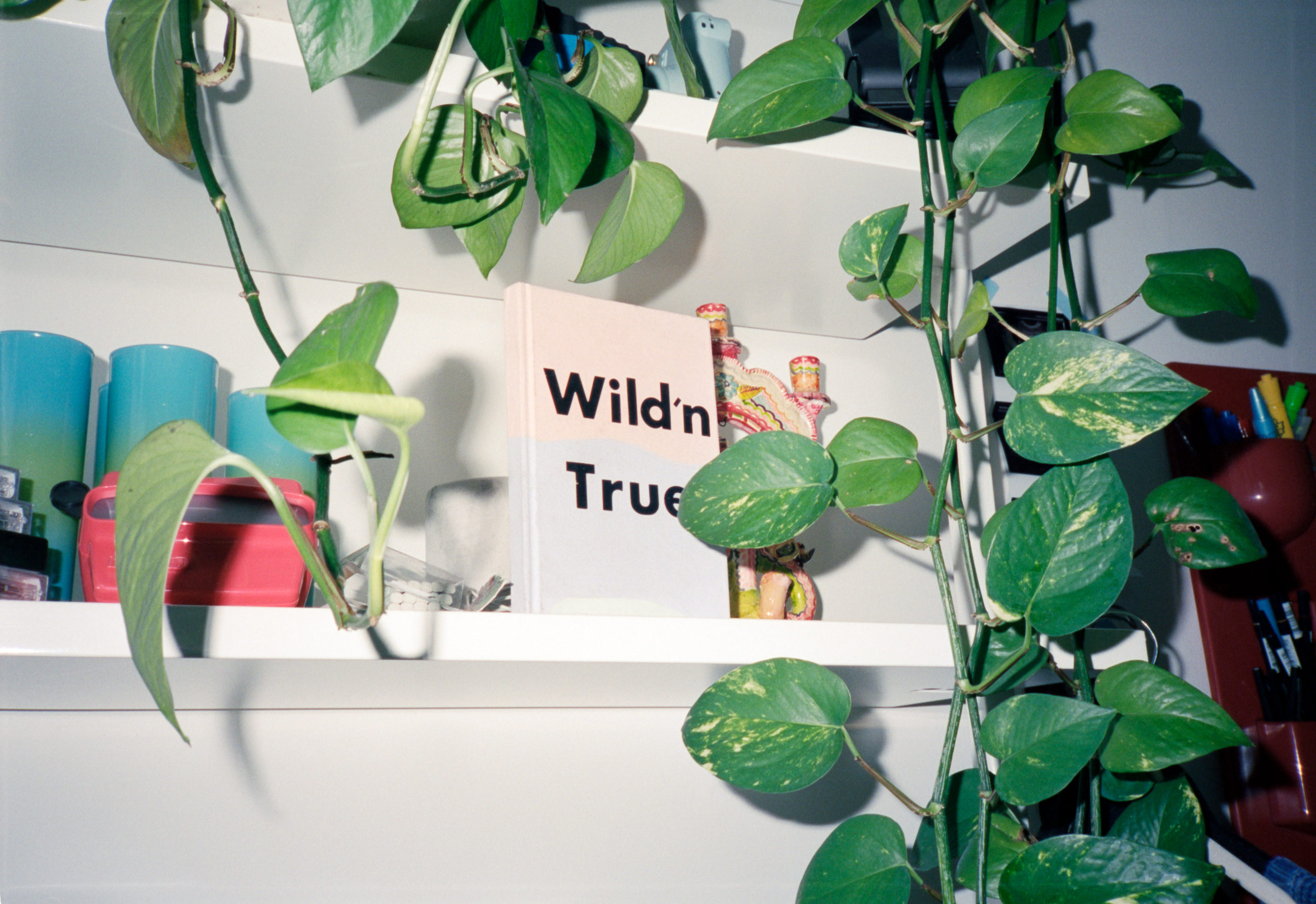
“I think ‘satisfied’ implies that you’re satiated…But I’m still extremely hungry. So in that way, no, I’m not satisfied. I’m totally ready for more.”